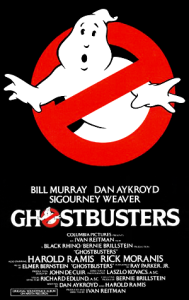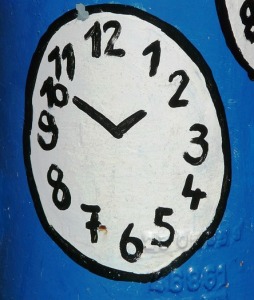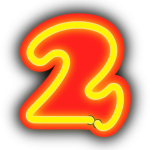
No it’s not gremlins in the website. It’s my attempt at a clever title about Task Busters- see below!
It came about because a support worker asked me about ‘Breaking tasks down into manageable steps’. It is a familiar strategy after brain injury. How do you do it in real life?
Be a Task Buster
It’s like ‘Ghostbuster’ (as in the movie) only this is for tasks, not ghosts. The title above is my attempt to phonetically sing the Ghostbusters Theme Song for you! You are very welcome to recommend improvement.
To get things done in life, and use the energy resources we have well, we all need to do a bit of task busting. This goes for whether you are helping someone else organise tasks, or you are going to be your own ‘Task Buster’.
Unfortunately I cannot claim credit for the term ‘Task Busting’. This great term and the two tricks for success below, come from a book I have had for quite a few years now called “Taking Control: A survivors Guide to Brain Injury’ (Transitional learning Community at Galveston. (1988))
Two Tricks to Task Buster Success
Yes I know. That seems too simple. Really this is it –
One “Determine Your Best Time of Day”
Two “Parcel out work into small tasks”
Task Buster Trick 1 “Determine Your Best Time of Day”
Good chance you already know a bit about your best time of day. We often say “I’m a morning person” or “I like to work late at night” or “I can’t concentrate for a couple of hours after lunch”. This first step takes that a bit further.
Step 1 Work out when it is best for you to do things.

Do a list or map or picture of a 24 hour period then fill in what time of day you are best doing different tasks. Things like:
[unordered_list style=”green-dot”]
- easy ‘no think’ things,
- jobs you need to concentrate on,
- when things need to get physical,
- when best you can have down time and chill out,
- the best time to go to places – it might be when it’s least crowded, or quiet.
[/unordered_list]
Step 2 – list all the things you need to do in a day / week / life
Go to the gym, do the grocery shopping, write a story, plan visit to family.
Step 3 – Take the Step 2 list and match it with Step 1 your map of when you are best doing what.
Match each activity from list 2 to the best time of day you listed in Step 1.
If grocery shopping is on the list of things you do and you need quiet unhurried time in the supermarket – maybe you want to match it with the time of day your supermarket is quietest.
If study is on your list of things to do you might want to match it with the time of day you are fresh and can concentrate.
Step 4 Make a working – workable list.
Write a list of the specific things you need to do and at what time (using whatever method you like best: written list, computer, app).
Make sure there is a lovely way to show when its done. I like big red ticks!
Step 5 Do It!
You should now have a Task buster list of things to do; with the time of day beside it; and a way to say ‘Done’.
Now it’s time to use it. And make sure you do it in the order you have recorded.
If that doesn’t work for you, change the routine around till it all works for you.
Task Buster Trick 2: “Parcel out work into small tasks”

The second trick is to break down the things you need to do into smaller and smaller steps.
Small enough so you have the tasks/steps that get the job down.
Once you have the list of tasks – put it together in the order you will do it.
Remember the steps need to be in the strict order you need to do them. No good having a task that says ‘write a shopping list’ after the task that says ‘go to the supermarket’!
Work on breaking down the steps till you can’t make them any smaller if you need to.
‘Write a shopping list’ – might be enough. It can also be broken down further. It might go something like this (or even more detailed, whatever works for you):
- Get the shopping checklist off Fridge door and get a pen.
- Check the pantry the checklist. Mark on the list what I need to buy.
- Check the fridge with the checklist. Mark on the list what I need to buy.
And Finally
Two extra strategies I have used that can be useful are:
Getting Things Done – David Allen. Even if you don’t take on all of it David has useful tips for planning and getting things done.
Pomodoro Technique – at its simplest it is about working on something for 25 minutes then 5 minute break. You could reduce the routine to fit your concentration abilities.
What do you think? Too simple? Too complex? Share your thoughts.
Better still share how you go as a Task Buster.
Oh and please feel free to have a go at improving my theme attempt in the title!



Hi Melanie,
How are you? Great article.
What I’ve found most benificial in the past is that in my diary having a section where it reads TASKS FOR TODAY:
When I’ve done the task, I tick it and bring it forward in my diary and if I haven’t completed it, I’ll put a red cross next to it and bring it forward in my diary at a time where I’m able to complete it.
Regards Ruth
Thank you Ruth for the tip – it can be very useful to have a way of marking what tasks have not been done so that they are carried forward. What better than the mark of a red cross as a reminder that this job is not done yet. And to have a reminder it is not yet completed. Thank you again.
Regards Melanie
Pingback: Strategies for Organisation Planning and Problem Solving After Brain Injury - Changed Lives New Journeys